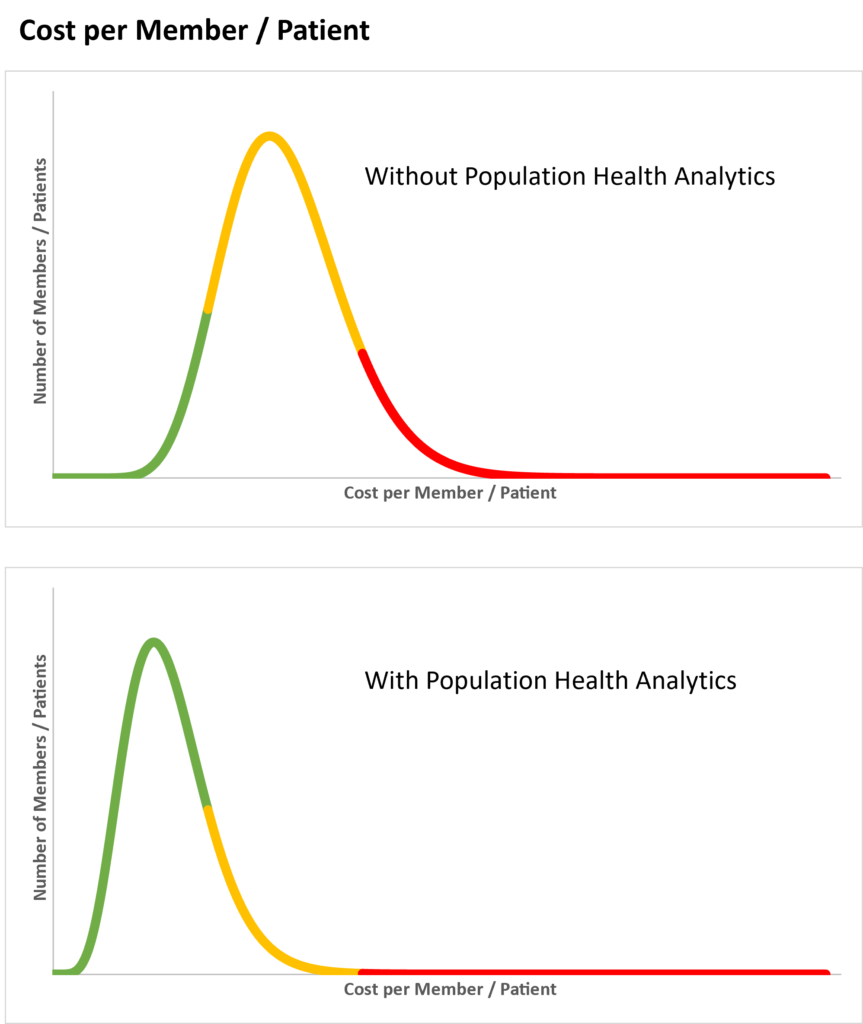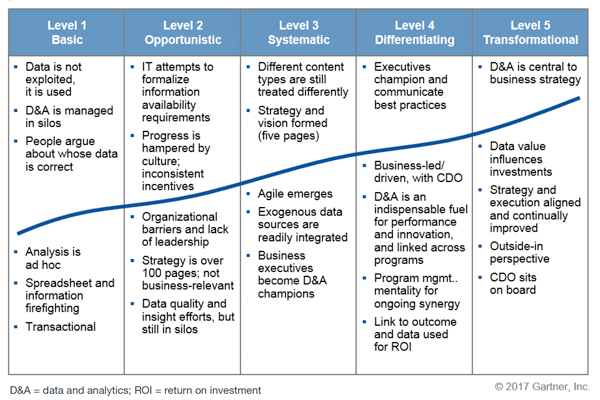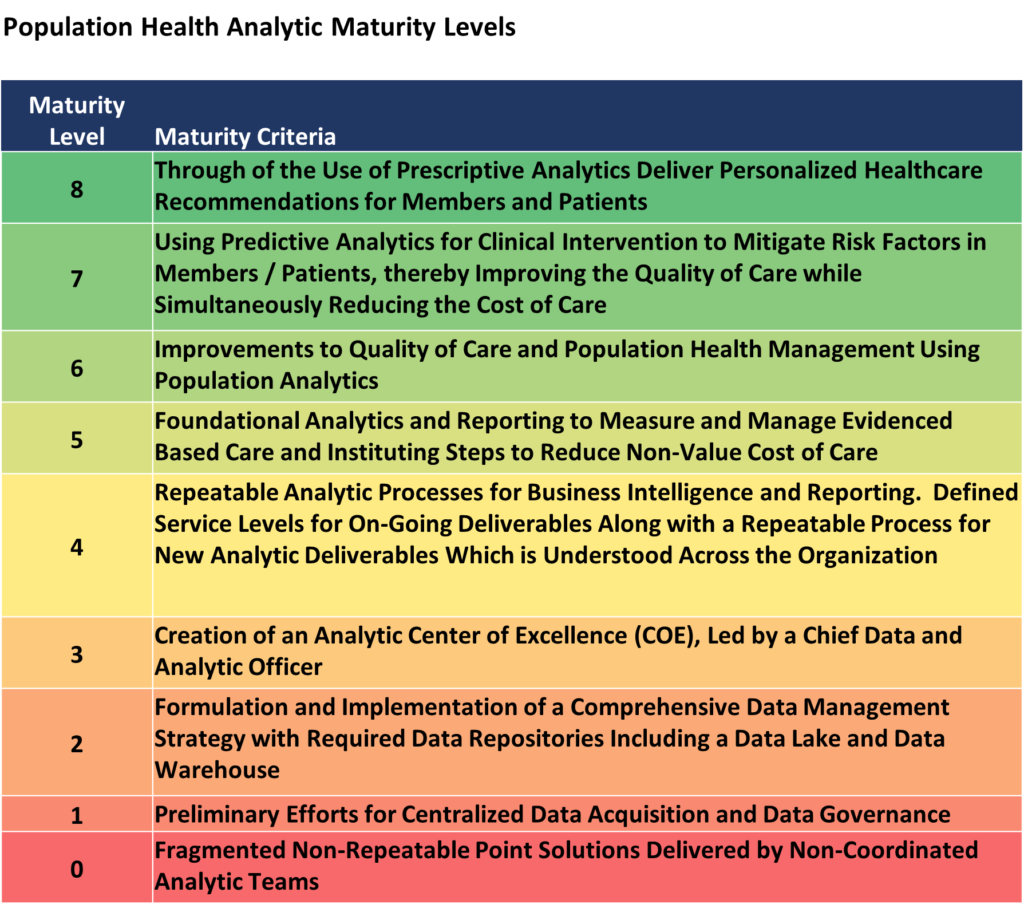Insight Paper September 8, 2021
Reducing the Cost of Care with Population Health Analytics
Achieve lower overall population cost and improved health outcomes with a Population Health Management Program enabled through Population Health Analytics.
Leading healthcare payers and providers are adopting digital transformation and analytic strategies to leverage the use of data to transform healthcare outcomes. This is being driven by many factors including the industry shift from a volume to value and quality-based reimbursement programs.
Population Health Management is gaining adoption as an approach to improve overall health outcomes for a population while concurrently reducing healthcare expenses, as part of the transformative process to shift from a fee-for-service to value and quality-based outcomes.To achieve these population health objectives, organizations require actionable analytic insights enabled through data to manage patients with chronic disease, focus on prevention, and apply the right interventions to help patients reach and maintain their health goals.
Ultimately the goal of a Population Health Program is to leverage actionable analytics to reduce the overall cost-of-care to your population. The Population Health Program should not only focus on extreme cost members / patients which make up a small percent of the population, but also the larger number of members / patients who have marginal health outcomes which come with higher costs. An effective Population Health Program with actionable analytics will move the entire population to lower cost with better health outcomes.

Analytic Challenges to Enable Population Health Management and Analytics
For most non-digital organizations, whether in healthcare or other industries, the challenges related to becoming a digital transformed analytic organization is that historically analytics has not been a core competency, and as a result at a low level of analytic maturity (as defined by the Gartner Group).
These organizations typically start out by forming an analytics department, in many cases without a defined strategy, which they perceive address the need to become an analytically driven organization. This at best delivers some tactical benefits for analytic reporting, but invariably has no tangible or measurable impact on reducing the cost of care or improving quality of care.
The path to becoming a high performing analytic organization invariably requires more significant transformative changes to strategy, process, and people beyond just data and analytic staff.For the healthcare industry, the Population Health Analytic Maturity Levels are denoted in the following table. Most organizations are at one of the lowest maturity levels, and therefore not in a position to achieve the benefits of a Population Health Management Program on a consistent and repeatable basis.
An organization needs to reach levels 5 and 6 for a Population Health Management Program to deliver results on a financially measurable and consistent basis. Levels 1 through 4 are prerequisites and require an organization-wide strategy, investments in people, technology, and data, and process changes on how functional areas and people work across the organization.


This digital and analytic transformation must be driven by a well thought strategic plan sponsored at the executive level of the organization. The development of a strategic plan will start with a clear enumeration of your strategy including goals and objectives based upon an objective current state assessment, which is then used to identify gaps to reach your strategy along with an investment and ROI roadmap. The strategic plan should also include an unbiased assessment of your organization’s current maturity level, along with the roadmap to move up to each of the next maturity levels. Trexin’s STAR (Strategy, Assessment, and Roadmap) methodology has been used with multiple Clients and can be used to jump-start your Population Health Program Strategy.
Once your strategy and the roadmap have been completed, you can then initiate the tasks across your processes, people, data, and technology to move up the Population Health Management Maturity Curve.
Call to Action
Given the industry shift from a volume to value and quality-based reimbursement programs, leading healthcare organizations recognize the need to start or further continue their digital transformation with Population Health Management and Analytics to remain profitable, competitive, and viable going forward.
Trexin has programs and can work with your organization to formulate a Population Health Management strategy and then architect and execute that strategy for your organization. Specifically:
Trexin will partner with your organization to create a healthcare analytics Strategy, Assessment, and Roadmap (STAR) ensuring appropriate levels of executive sponsorship. Our STAR is a blueprint for how to execute a business strategy, explicitly linking your business goal all the way to elemental people, process, and technology capability dimensions that materialize the strategy and its compositional tactics.
Trexin will work with your organization to manage new development initiatives to ensure they are delivered on-time, within budget, and aligned to your business requirements. Additionally, Trexin’s Program Management Advisors will work with your organization to roll out your healthcare analytic capabilities to the functional teams in your organization where the expected care and financial results will be realized.
Trexin will help you identify and architect the proper data acquisition and data management foundational capabilities to curate the required data as well as implement the required technology platform, whether cloud, on-premise, or hybrid. Trexin can also assist your organization with master data management (MDM) and governance to ensure your data is reliable and consistent.
Trexin will assist you with defining and architecting the analytic capabilities to deliver your strategic healthcare analytics objectives. This can be both traditional business intelligence (BI) analytics along with artificial intelligence (AI) and machine learning (ML) analytics. Trexin will develop the analytics as well as architect and implement the required analytic platforms.
Let Trexin help you “get to done” with Population Health Management and Analytics. Click here and connect with a Trexin Advisor today.
Results
The strategy that Trexin defined prescribed an 18-month phased implementation roadmap addressing 6 critical use cases and the buildout of a new provider digital identity and risk engine. The system itself leveraged the Observational Medical Outcomes Partnership (OMOP) Common Data Model (CDM) and aggregated 5 primary categories of data: the body, indicating the individual person involved, keyed by the concept of a new Universal Provider ID; the business, indicating the contractual relationship involved; the building, indicating the physical location of the service; cross-referencing data; and the user role, indicating the types of things people will do with the systems, grounded by the interaction analysis and buildout of 8 key provider personas.

